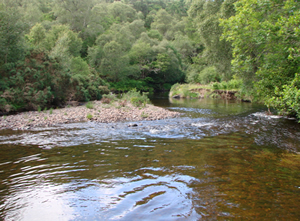 Hydromorphology describes the physical form and process in water bodies. Essentially it explains how the interactions between water and sediments produce the wide variability in morphology, hydraulics and substrate textures observed in water bodies. These characteristics provide the physical habitat template upon which all water-dwelling species must live.
Hydromorphology describes the physical form and process in water bodies. Essentially it explains how the interactions between water and sediments produce the wide variability in morphology, hydraulics and substrate textures observed in water bodies. These characteristics provide the physical habitat template upon which all water-dwelling species must live.
Cross-disciplinary research integrating physical and ecological processes is generally lacking and is of fundamental importance to defining physical and ecological targets in water bodies. Specific projects look at the hydromorphological requirements of Atlantic salmon and the freshwater pearl mussel over a range of spatial scales. Defining these relationships in near pristine systems (‘reference condition’) provides an objective basis for determining how far from a desired state other impacted water bodies are.
A fundamental concept that we adopt is that of ‘process-based restoration’ where the aim is to reinstate natural geomorphic processes to promote a condition of self-sustaining physical diversity rather than tackling a perceived problem through direct localised intervention. Process-based restoration should operate at the largest spatial scale practical within imposed practical constraints. Adoption of this approach addresses the cause rather than the symptom of the problem and helps to prioritise work within a watershed management framework.
Our research in this area focuses on:
- Linking hydromorphology to in-stream ecology
- Assessing impacts of engineering on water bodies
- Modelling channel morphology and hydrology
Who is working in this area?
|
Updated: 23 Jan 2024, Content by: MC
|

